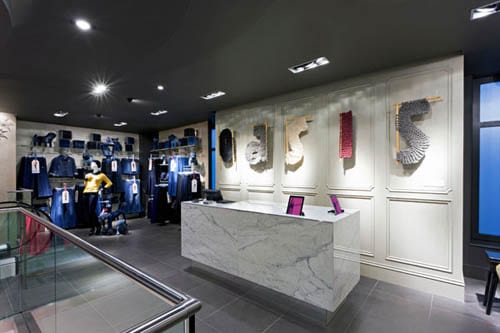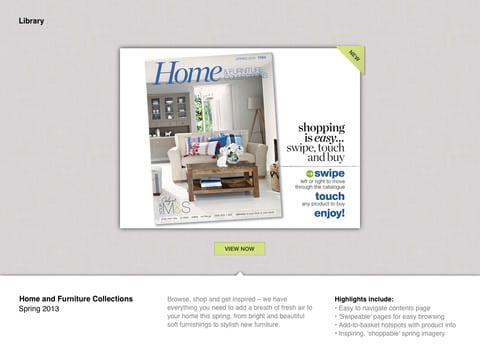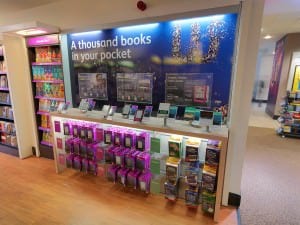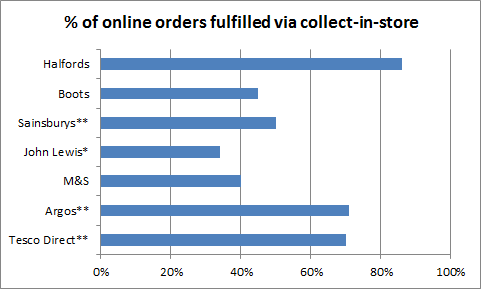How different types of omni-channel services can improve the customer experience
Customer service should be at the top of every marketer's agenda since satisfied customers are the key to brand loyalty and that all important sale. With the many new devices and channels now available, omni-channel helps to firmly place the customer at the centre of all marketing activity by bringing together the right channels to enhance the customer experience.
To help marketers get their heads around this latest form of marketing, RedEye has selected 5 examples of brands creating an omni-channel customer experience:
- Oasis: Online Shopping Instore
- M&S: Instore Experience
- Waterstones: Instore eBook Service
- John Lewis: Click and Collect Service
- Boots: Instore Digital Kiosk
Oasis: Online Shopping Instore
The introduction of iPads across Oasis’ stores enables the customer to browse online, pay online and place orders online whilst in store. Users have the option to try an item on in store, and then order it online and have it delivered, rather than having to queue at the till to pay.

Source: Retail Store Designs
Likewise, if a garment is not available in the store, the customer can order it via the iPad. Staff are armed with the iPads and can help shoppers check sizes, colours and styles that aren’t currently available in the shop. Sales assistance via the iPad is available on both the shop floor and in the changing rooms, enabling the sales team to engage with the customer at the point of decision. In the first week of the iPad ordering system opening (in 2011), 20% of store sales were made through the iPad each day. The iPad is a great example of enhancing the customer experience, as it decreases queue times, increases product availability and improves customer service.
M&S: Instore Experience Online
The M&S ‘at home’ iPad app, launched in September 2012, is the second app introduced for iPhone users. The ‘at home’ app focuses on home items from the M&S catalogue and provides a visual, digital journey mimicking that of an ‘in store’ experience.

Free to download to an iPad, the app offers enhanced touch interaction capabilities to enable the customer to browse through the company’s home wares in a set up that would be found in store; interactive rooms are dressed with the company’s products to provide a more realistic view of how that product would look in your own home; individual pages can be bookmarked for a speedy return at a later date; there is an in-app shopping basket for buying; and social features are also included allowing customers to share images or products via Twitter or Facebook.
The app enhances the customer experience by providing customers with an easy way to browse home ware products and share items for a second opinion, before making a purchase (and that purchase itself can be made online, through the app or in store; whatever suits the customer best).
Waterstones: Instore eBook Service
 Having expanded its product line to include eBook devices, Waterstones is allowing customers to buy and download content onto an electronic device using free Wi-Fi available in stores. The strategy (introduced last year) enhances the customer experience by providing consumers with the option of purchasing an eBook, whilst physically browsing books in a traditional bricks and mortar store.
Having expanded its product line to include eBook devices, Waterstones is allowing customers to buy and download content onto an electronic device using free Wi-Fi available in stores. The strategy (introduced last year) enhances the customer experience by providing consumers with the option of purchasing an eBook, whilst physically browsing books in a traditional bricks and mortar store.
While many consumers are moving towards purchasing eBooks, previously the online set up meant customers missed out on the ability to flick through the book prior to purchase. The introduction of Wi-Fi allows book lovers the best of both worlds in terms of hard copy or eBook purchases. The convenience of downloading an eBook from in store, also provides eBook customers with easy access to the store’s specialist staff, trained to provide help and guidance on any of Waterstones’ books.
Boots: Instore Digital Kiosk
Boots’ Advantage Card Loyalty scheme launched back in 1997 as part of a CRM loyalty programme. In store kiosks have always been used in conjunction with the cards, allowing users to print off special offer vouchers.
Today, with over 16.4million cardholders currently using the loyalty card (both online and in store) the Extra Offer Kiosks enable card holders to obtain exclusive personalised offers, based on the number of points they have accumulated. The kiosks can also be used to check how many points customers have and update personal details. Whilst the Kiosks aren’t available in every boots store, customers can go online to find their nearest Kiosk store locator.
Despite the fact that the kiosk and loyalty programme isn’t anything new, Boots continue to use the programme to enhance the customer experience. Points can be collected and used both online and offline and there is even an online points calculator to help users work out how much they have to spend.
John Lewis: Click and Collect Service
John Lewis first introduced a click and collect service back in 2008. Today, the strategy that allows customers to buy online and arrange collection from a local store, has been extended to its sister company Waitrose and covers 300 stores.
In April 2012 John Lewis reported 25% of orders made through johnlewis.com were for click and collect. In addition to this, good Christmas business at the end of last year was also allocated to the click and collect service.
While the service is nothing new, allowing online customers the option to pick up purchases in store removes the hassle of having to wait for a delivery and allows the customer to pick up an item when convenient for them. It also removes the cost of delivery charges which can put some customers off purchasing online. Simple as it sounds, giving the customer the option of how they can receive their goods is an ideal way to improve the customer experience.
Comparing the John Lewis service to the popularity of other Click and Collect services shows that this service has potential for further growth and it is perhaps not prioritised within the customer journeys as some of its rivals.

Source: Sept 2012 compilation of the popularity of UK click-to-collect online orders

Thanks to
Katie Traynier of
RedEye for this post. With a BA (Hons) in Media Writing, Katie began her career in PR working on campaigns for clients including Flora, Rosemary Conley, Knorr, Blockbuster, Meccano and the breast cancer charity Walk the Walk. After running her own freelance PR consultancy she spent a year in Australia where she worked on projects for Vodafone, Brisbane City Council and BMW. Katie joined RedEye in 2008, helping to grow the marketing department, and has become a regular contributor to both the RedEye blog and the RedEye whitepaper library.….. You can connect with her on
LinkedIn.







 Thanks to
Thanks to 



